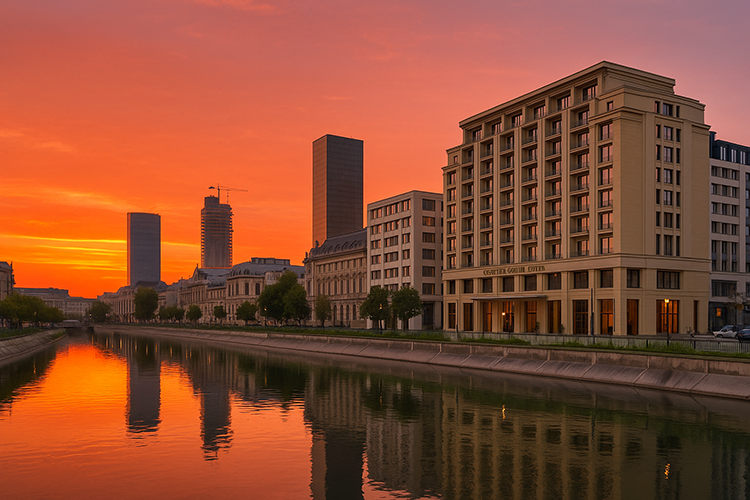Romania’s Hotel Market Outshines Expectations in H1 2025, Bolstering CEE Investment Appeal
Romania’s hotel sector continued its strong trajectory in the first half of 2025, outperforming forecasts and strengthening its position as one of the most attractive segments for investors in Central and Eastern Europe. Data from Cushman & Wakefield, based on STR hotel performance samples, shows that nationwide occupancy grew by around 4 percent compared to the same period last year. The average daily rate rose by about 8 percent in local currency, leading to a year-on-year increase of approximately 12 percent in revenue per available room.
In Bucharest, the upward trend was similar. Occupancy levels rose by roughly 3 percent, the average daily rate climbed by 7.5 percent, and revenue per available room advanced by 11 percent between January and June compared with 2024. This growth outpaced inflation, which Moody’s placed at an average of 5.28 percent over the same period, making hotel assets particularly appealing as an investment class.
Across the wider CEE region, hotel performance indicators also moved sharply higher. Revenue per available room increased by 9.3 percent, supported by a 6.9 percent rise in average rates and a 3.4 percentage-point gain in occupancy, which reached 65 percent. Although still below 2019 levels by 6.5 points, the RevPAR index for all capital cities in the region surpassed pre-pandemic benchmarks. Warsaw led with an index of 138.9 percent, followed by Sofia at 128.4 percent and Prague at 125.5 percent. Warsaw and Sofia were the only cities to exceed their 2019 occupancy levels, standing at 104.6 and 100.2 percent respectively.
Development activity in the first half of 2025 delivered an additional 1,600 rooms across the six main CEE capitals, representing a 1.7 percent annual increase in supply. Growth was concentrated in the luxury and upscale categories, with Warsaw, Prague and Bucharest accounting for most of the expansion. Among the most notable openings were the Fairmont Golden Prague and the Corinthia Grand Hotel Bucharest. In Romania’s capital, supply is expected to grow at a compound annual rate of 3 percent over the next three years, according to Cushman & Wakefield, with more than 1,000 rooms scheduled to enter the market by 2027.
Investor sentiment has strengthened in parallel with operational performance. In the CEE-6 region, hotel transaction volume reached €682 million in the first half of 2025, up 364 percent compared to the same period in 2024 and the highest level since 2019. Most of the deals involved upper upscale and luxury properties. Romania alone recorded more than €50 million in hotel transactions, up from around €35 million in the same timeframe last year, with one major deal agreed in the summer expected to close officially in September.
Alina Cazachevici, Partner and Head of Valuation & Advisory, Hospitality & Alternatives for CEE/SEE at Cushman & Wakefield, noted that the domestic market continues to demonstrate resilience. She said the growing involvement of local investors is providing stability at a time when international capital remains cautious amid political uncertainties in the region.
With robust operational results, a healthy development pipeline and rising transaction volumes, Romania’s hotel market is positioning itself as a compelling opportunity for both local and regional investors, while also contributing to the broader strength of the hospitality sector across Central and Eastern Europe.









